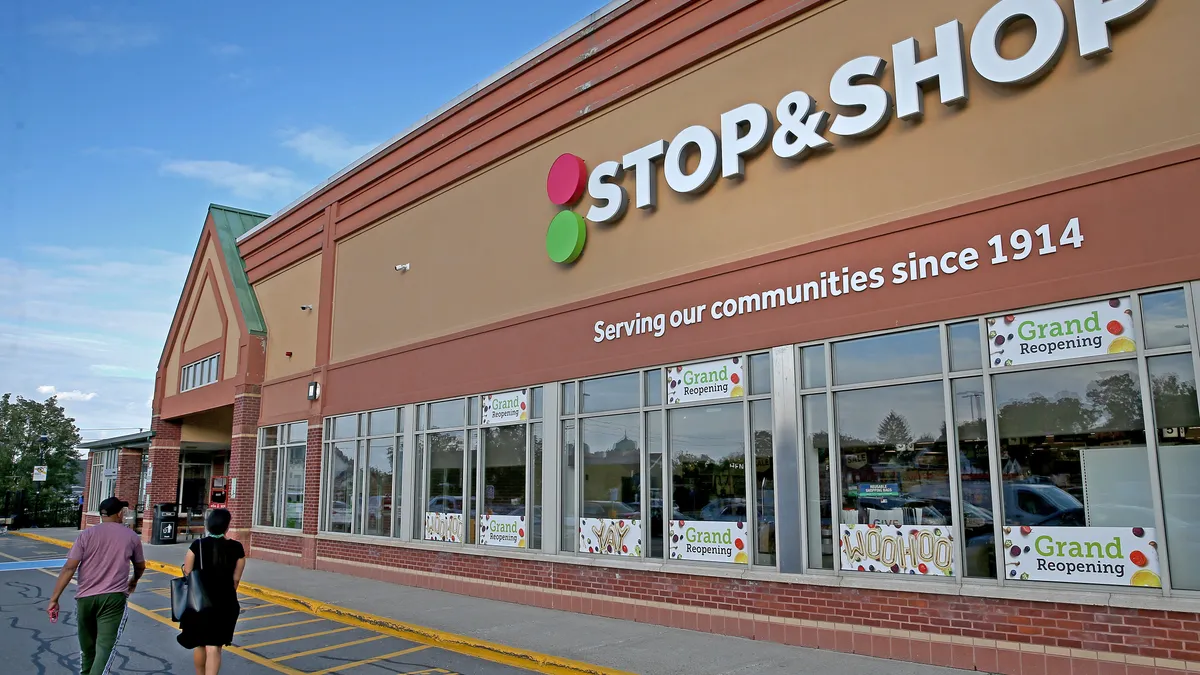Dive Brief:
- Convenience stores are increasingly taking sales away from traditional grocers, according to the Green Bay Press-Gazette. Operators like Kwik Trip now offer fresh produce and prepared foods in addition to staples like cigarettes and packaged snacks.
- Between 1988 and 2016, convenience stores’ share of grocery sales doubled from 8% to 16%, according to The Food Institute. Traditional grocery stores’ market share has steadily eroded, meanwhile, dropping from 49% in 2011 to 44% in 2016, according to Food Institute data.
- "If you can be the convenient store for groceries and provide a high level of quality and service, you’ve got a future,” Jeff Lenard, spokesman for the National Association of Convenience Stores, told the Press-Gazette.
Dive Insight:
The days when convenience stores’ only food options were bags of chips and hot dogs spinning lazily beneath heat lamps are a thing of the past. Now, it’s common to find a fresh produce section, grab-and-go sandwiches and even a made-to-order food station inside your local c-store.
Kwik Trip, based in Eau Claire, Wisconsin, delivers more than 80,000 pounds of bananas to its roughly 450 stores, according to NACS spokesman Jeff Lenard. Sheetz and Wawa, meanwhile, are building gas-free locations in urban centers that focus on prepared foods, produce and hot-selling snacks like all-natural beef jerky and nut mixes.
Rutter’s Farm Stores, a regional c-store chain with more than 60 locations throughout southeastern Pennsylvania, has transformed its stores into meal destinations over the past decade. Stores feature full kitchens where employees turn out everything from breakfast quesadillas to pulled pork sandwiches and Asian noodle bowls. Rutter’s also features a low-carb menu and has begun introducing more healthy and clean-label items, according to Ryan Krebs, the company’s foodservice director.
“We quit deciding what the customer would want and decided to put out as much as we can, and as much diversity as we can, and you create your own experience,” Krebs recently told Food Dive.
With sales of staples like cigarettes down, convenience stores are finding that foodservice compensates for that lost revenue. According to NACS, c-store operators whose store sales rank in the top fourth of the industry sell three times more prepared foods and 6.6 times more hot coffee than companies that rank in the bottom fourth.
For supermarkets, this amounts to increasing competition from a channel they’ve long written off. It’s also a sign that quick shopping trips stand to transform food retailing. In the past few years, grocers — who have long operated their own c-store formats — have built more convenience-focused locations. Giant Eagle’s GetGo gas stations are being remodeled and rebranded as GetGo Café + Market, and carry groceries as well as a variety of prepared foods. Hy-Vee has also invested in its convenience stores, while Martin’s in Indiana recently introduced a Martin’s Express format.
Although these smaller formats seem promising, the fact remains that many grocers operate large stores that don’t cater to consumer quick trips. As demand continues to evolve, it will be interesting to see how supermarkets update their traditional stores to help shoppers get in, get out, and get going in a hurry.










